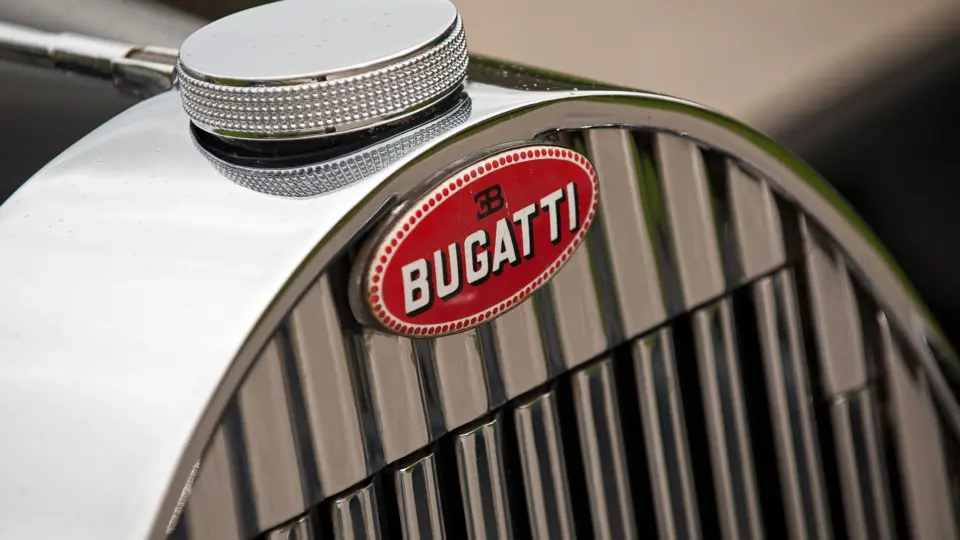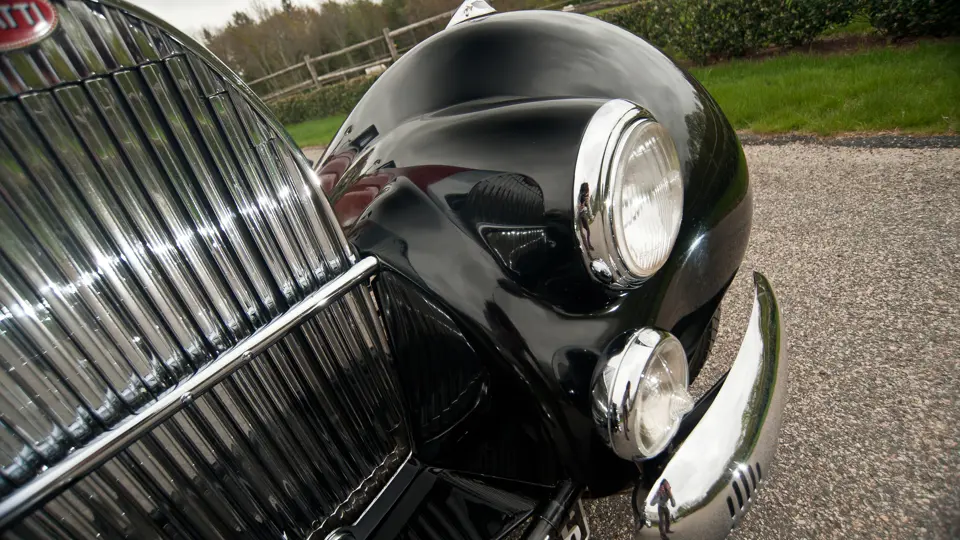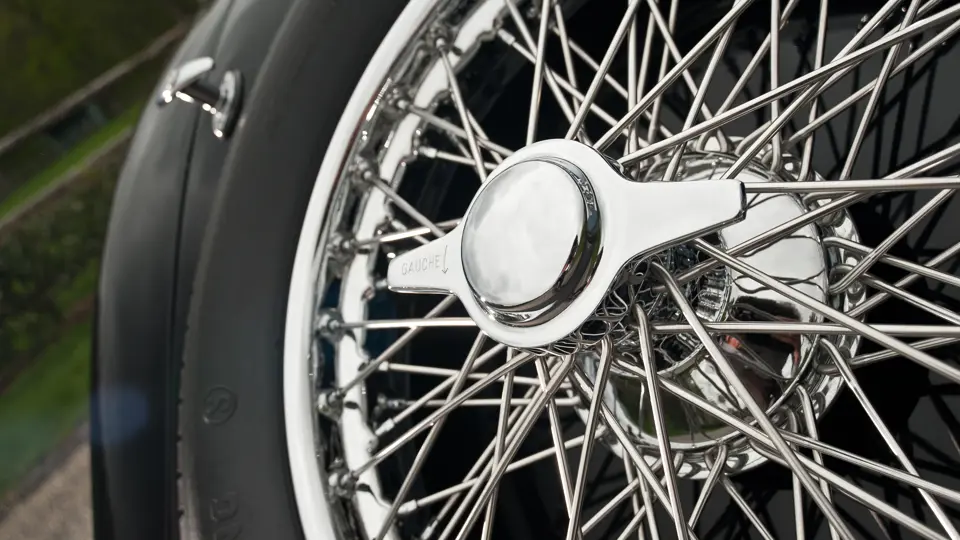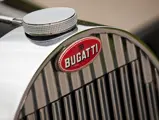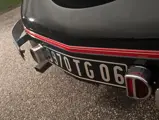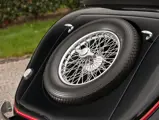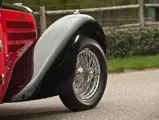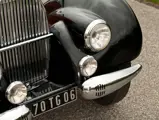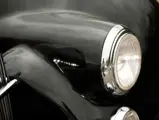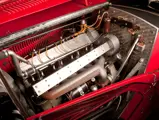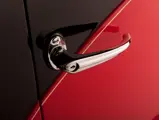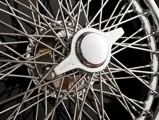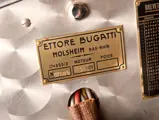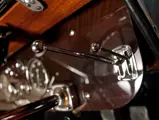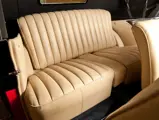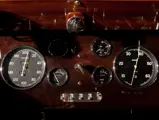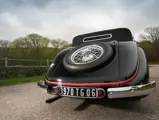135 bhp, 3,257 cc DOHC inline eight-cylinder engine, four-speed gearbox, solid axle and semi-elliptic leaf spring front suspension, live axle and quarter-elliptic leaf spring rear suspension, and four-wheel hydraulic brakes. Wheelbase: 130"
- Sporting Stelvio Cabriolet coachwork
- Known history
- A wonderful example of the desirable Bugatti Type 57
From early 1934 until soon after the outbreak of war in September 1939, the automotive output from Bugatti’s Molsheim factory was almost exclusively devoted to the Type 57 model and its variants. While retaining several traditional Bugatti features, this new model represented a virtually complete break with the past. From the outset, it was never regarded as an outright sports model but rather as a high-performance sporting tourer, which was nevertheless capable of carrying luxurious coachwork. By this time, Ettore Bugatti himself was devoting the bulk of his time to the production of the Bugatti racecars, while his talented son Jean played a leading role in the design and development of the new model.
The 3.3-liter engine was completely new, with a five-bearing crankshaft and a train of helical gears driving the twin overhead camshafts. The fixed cylinder heads utilized efficient hemispherical combustion chambers, and the cylinder block itself was a single symmetrical casting. Valve actuation was revised from that of the earlier Miller-influenced Type 50, with the Type 57 utilizing fingers interposed directly between the cams and their respective valves. The gearbox was also completely new, and it was now mounted directly in unit with the engine by a conventional bell housing containing a normal single-plate clutch instead of the prior multi-plate unit.
Before 1927, Bugatti had not produced coachwork, if one discounts the racing bodywork of the Type 35, its variants and other early racing models. After 1927, Bugatti developed an increasing in-house capacity to produce their own traditional timber-framed coachwork, initially for the Grand Sport versions of the Types 40 and 43. From around 1930, Jean Bugatti played an increasingly important role as a stylist, working in conjunction with chief coachwork designer Joseph Walter. The first model to display Jean’s design talents was the Type 55 roadster of 1931.
From the outset, Type 57 models included the Galibier four-door saloon, the Ventoux two-door coupe and the Stelvio cabriolet, which was mainly bodied by local coachbuilders Gangloff of Colmar. Alternatively, the cars could still be supplied in chassis form so that Bugatti’s agents and clients could select their own coachbuilder to meet their requirements.
This 1938 Type 57 Stelvio cabriolet, chassis 57569, was delivered on August 8, 1937 to Gangloff, and on October 15, 1937, it was ordered as a Stelvio Cabriolet by Bugatti’s main agency in Paris for a client believed to have been a member of the noted Pernod family. On October 27, 1937, the car was delivered to its first owner. By April 1938, 57569 returned to Bugatti’s Paris agency, and in April 1938, it was sold to its second owner, named Gaillard. The known history of 57569 resumes in the early 1960s, when it was acquired from Pierre Proust Garage in Montrouge, France by Guy Huet of Holland, who subsequently had the T57 Stelvio restored by Piet Peperkorn in Haarleem. Subsequent owners included Erwin Hucke, the noted Maybach expert and motoring enthusiast Michael Graf Wolff-Metternich and Mr. Hofgut of Switzerland in the late 1980s.
Since that time the car has remained in the United States, first in the ownership of John R. Lee of Dallas, Texas. Under Mr. Lee, Bob Smith Coachworks Inc. of Gainesville, Texas performed some selective work to the car including paint repairs, adjustment of the carburetors, new carpeting and new tires, as well as attention to the braking and electrical systems. Ownership through to the present day is documented in the Bugatti Register.
With its older but well maintained restoration, this car clearly benefits from the loving care of its noted owner-collectors. 57569 has most recently received the expert attention of Donald Koleman’s Portsmouth, New Hampshire-based Competition Motors, Ltd. During this period, Competition Motors carefully elevated the rare Stelvio to its current level of presentation and running order. Work included the location and installation of proper gauges and dashboard switches, as well as the installation of proper electrical-system components. The striking red and black paintwork was selectively refinished as required. Mechanically, the engine was removed, inspected, dynamometer-tested and reinstalled.
While the bulk of Type 57 Stelvio Cabriolets, including 57569, were indeed bodied by Gangloff, its coachwork displays several unique stylistic nuances that make it quite distinctive and particularly sporting. Enhanced by a dramatic color combination, the coachwork of 57569 features somewhat smaller and “racier” proportions and a wonderful profile, with its doors sweeping gently downward from front to rear. Tall rear-fender crowns nearly reach to the base of the convertible top, and stately landau irons complete the external picture of 57569. Inside, the restored light tan upholstery remains handsome, reveals few signs of use and is accented by the impressive dash, instruments and controls. The engine bay, with Bugatti’s characteristic engine-turned firewall and race-bred DOHC inline eight-cylinder engine numbered 411, is tidy in presentation, well maintained and approaches metallic sculpture. The component numbers of the front axle, gearbox casing and differential have all been inspected by Donald Koleman and are all stamped “411,” as is the left rear engine leg, which is also stamped with the car’s chassis number, 57569.
This Type 57 Stelvio Cabriolet is impressive throughout and remains a wonderful representative of the classically refined, elegant and technically sophisticated Bugatti Type 57, a true automotive landmark.




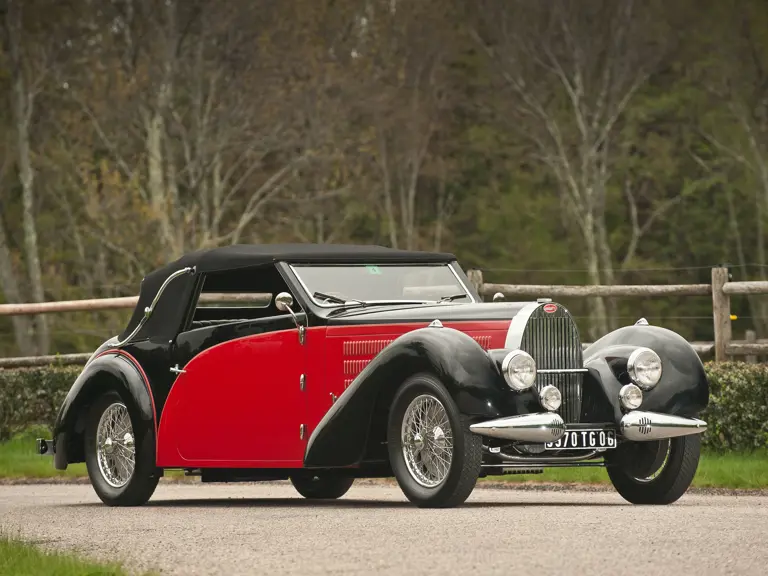
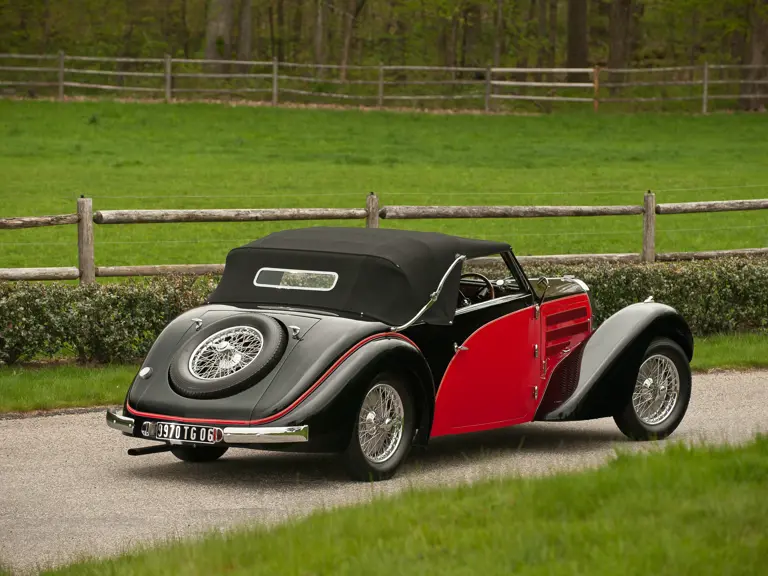

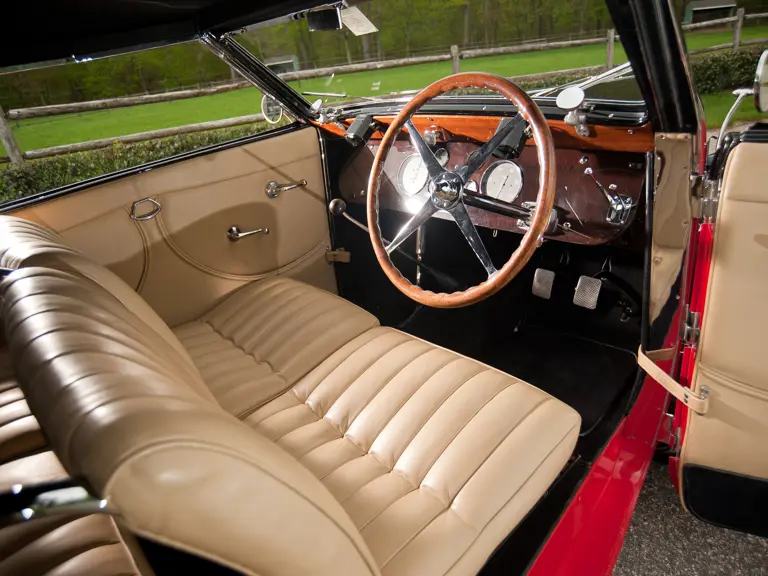
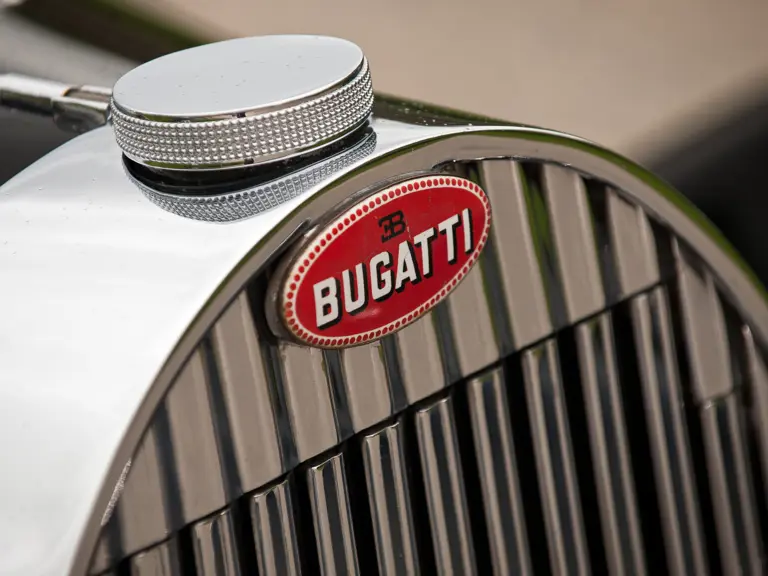
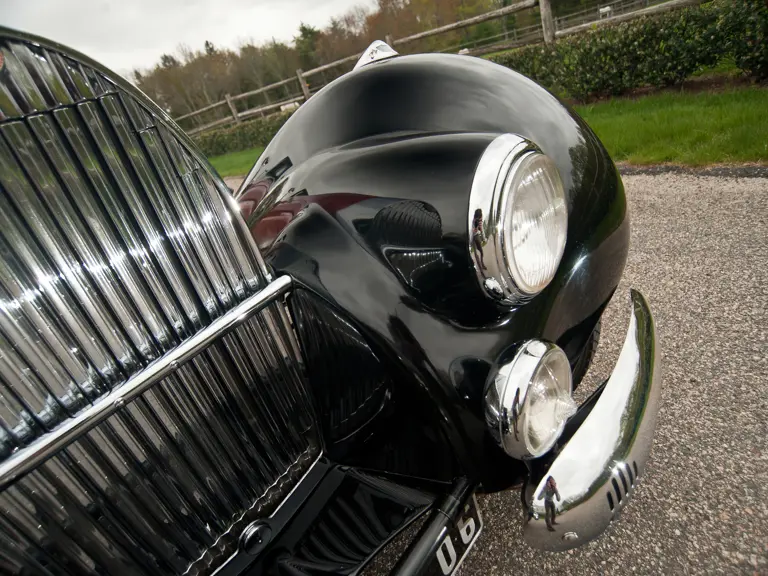
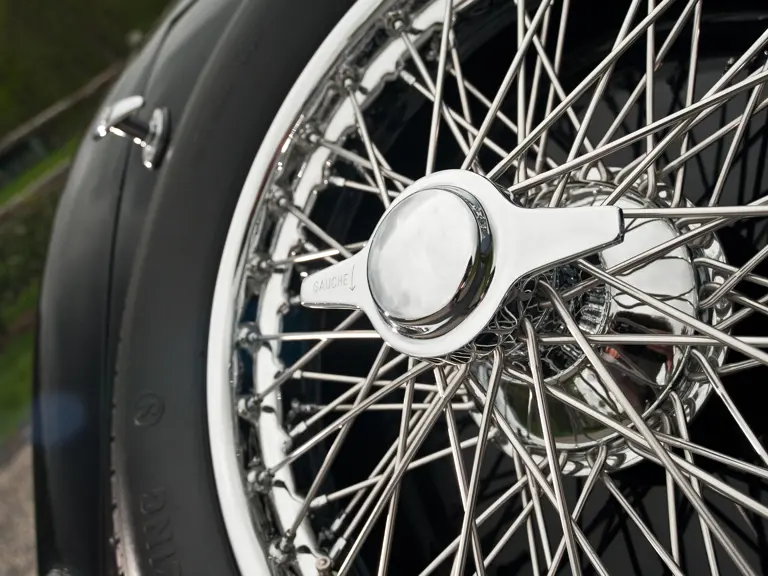
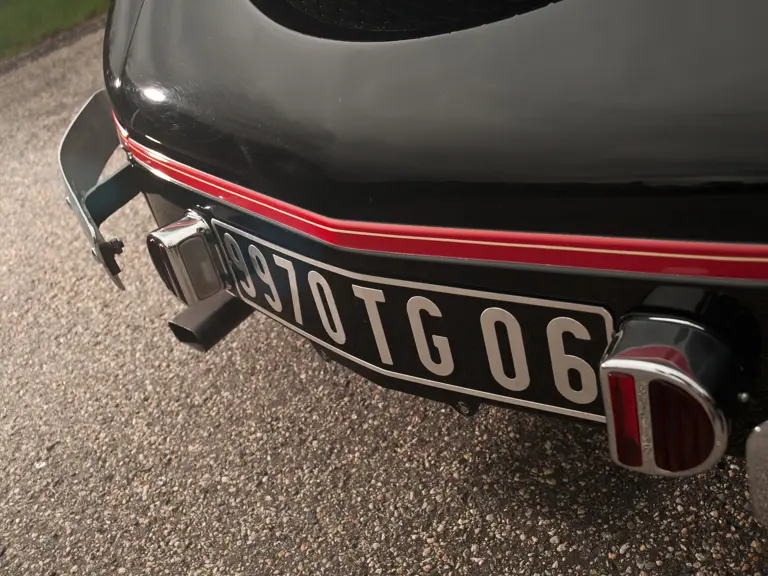
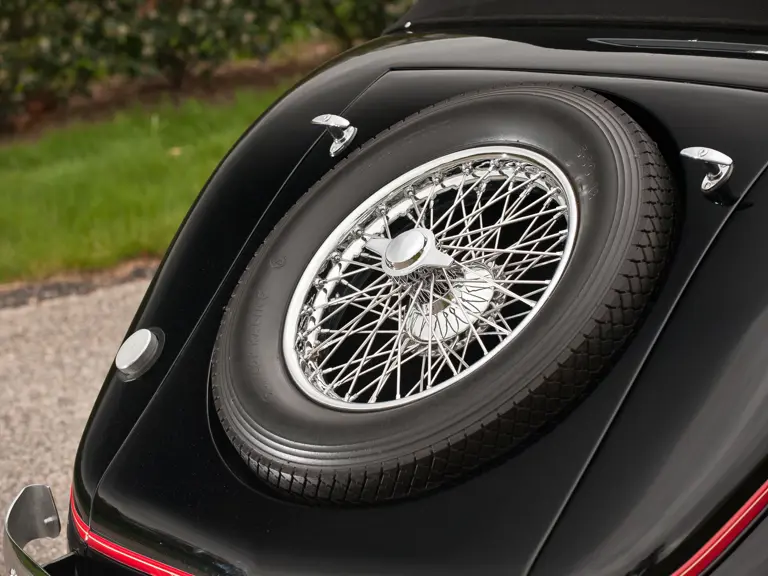
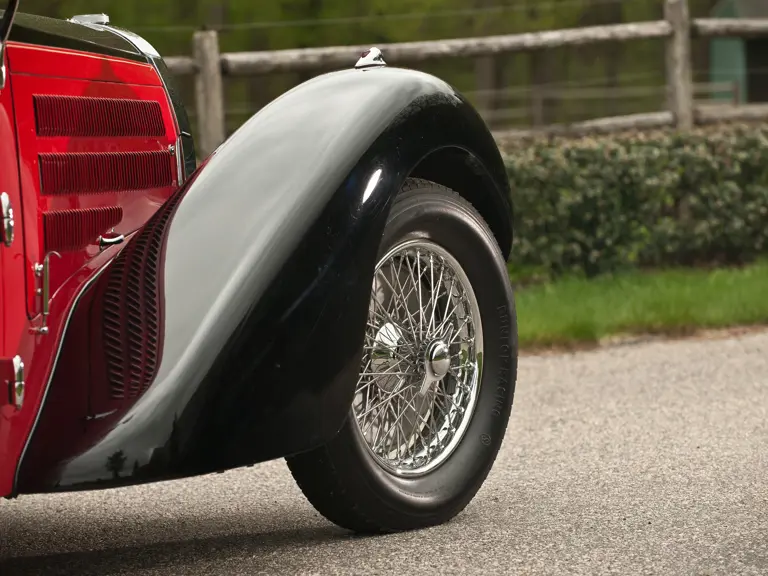

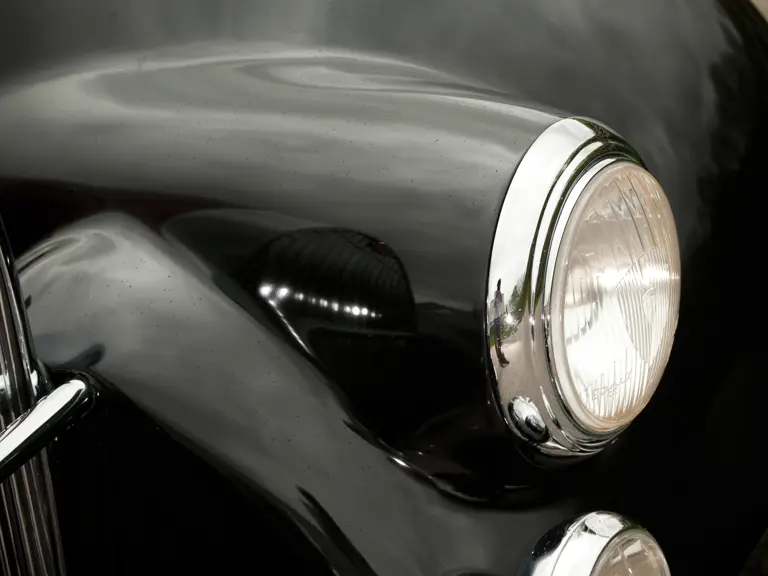
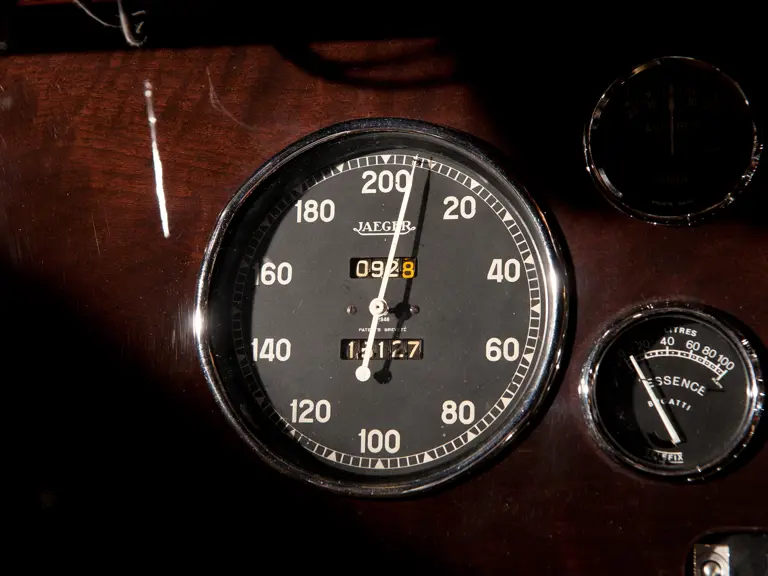
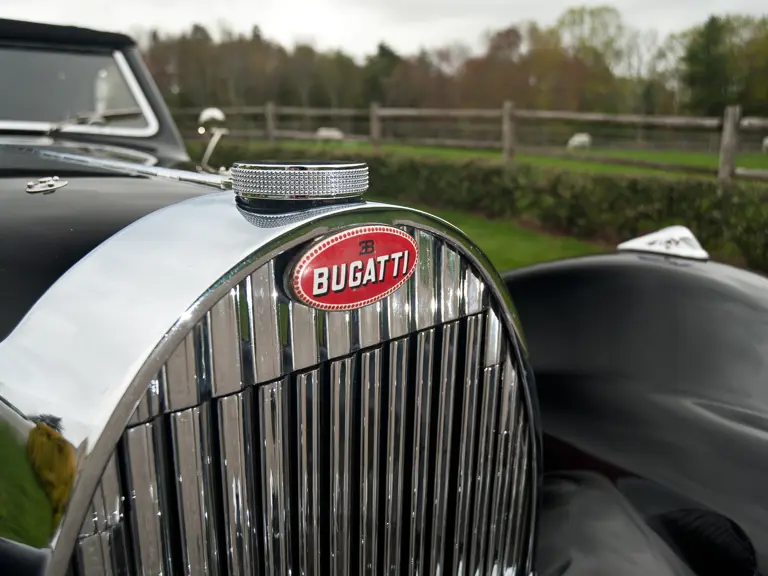
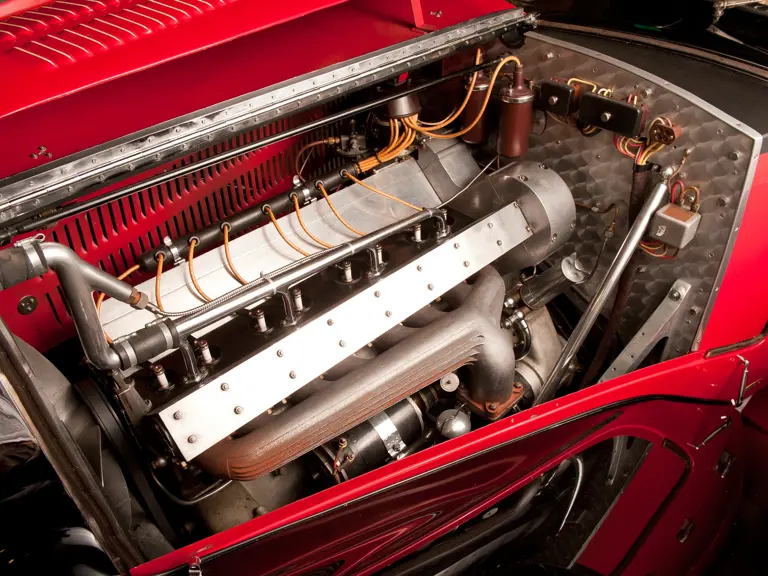
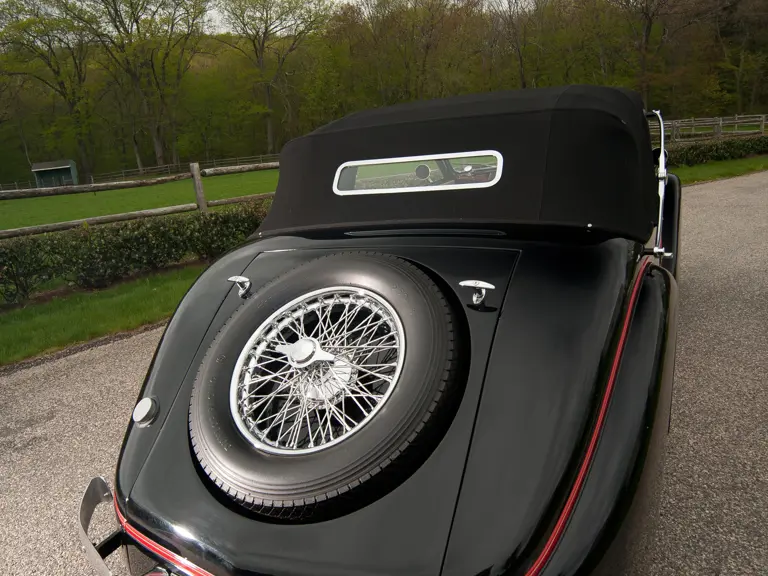

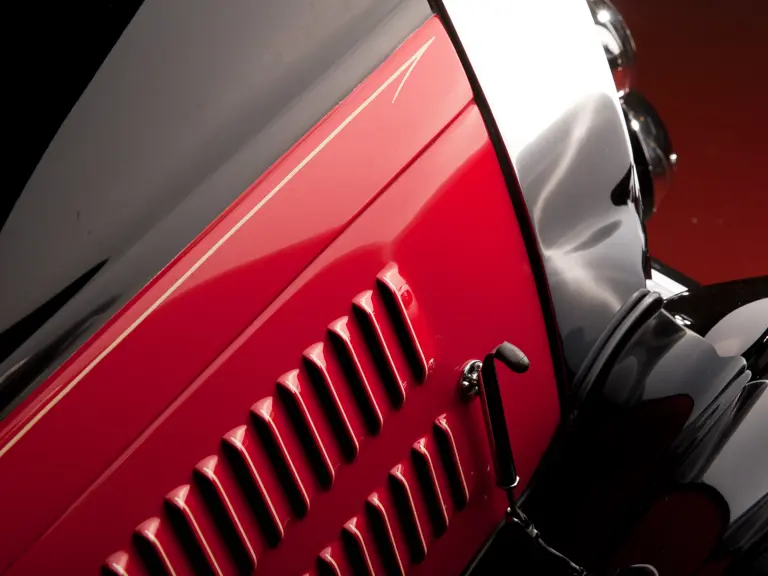
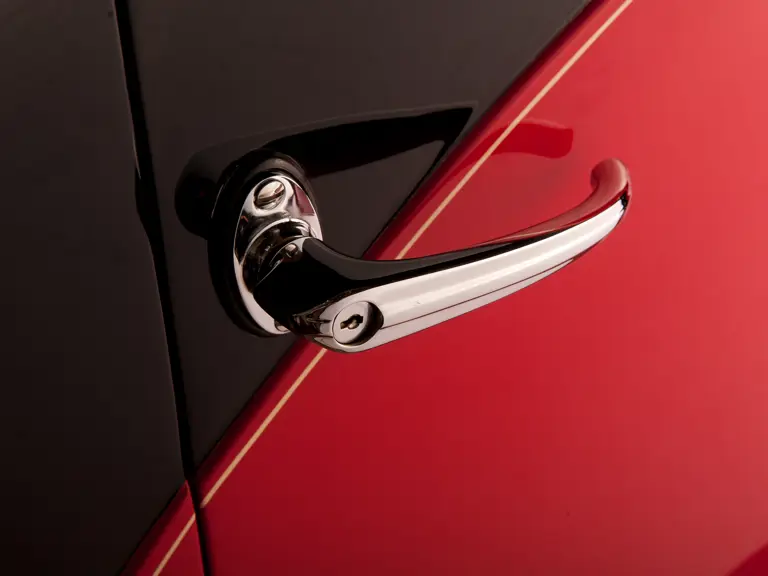
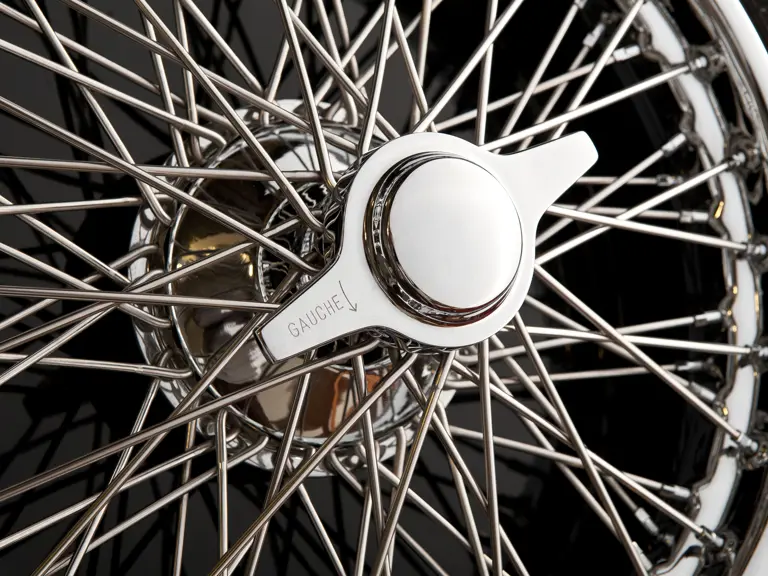
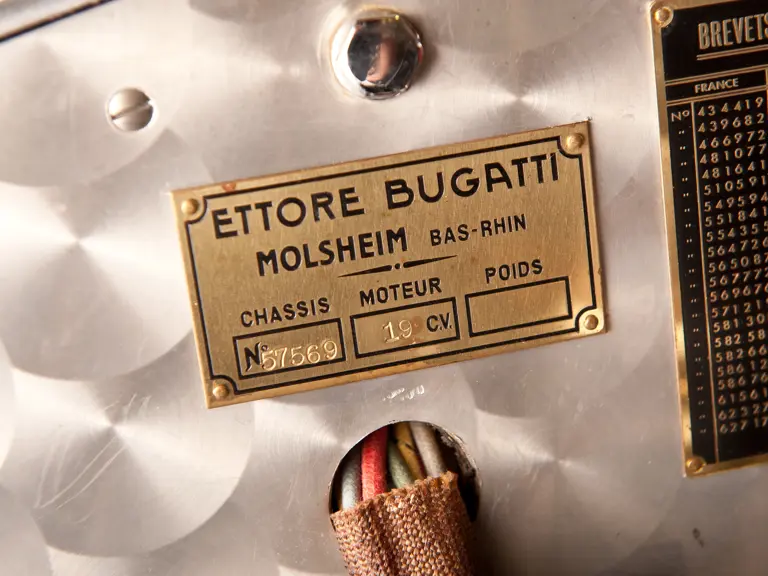
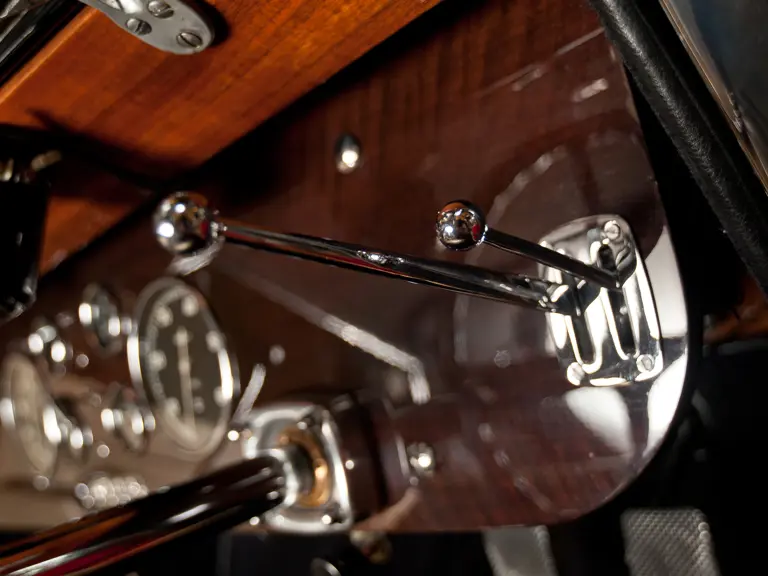
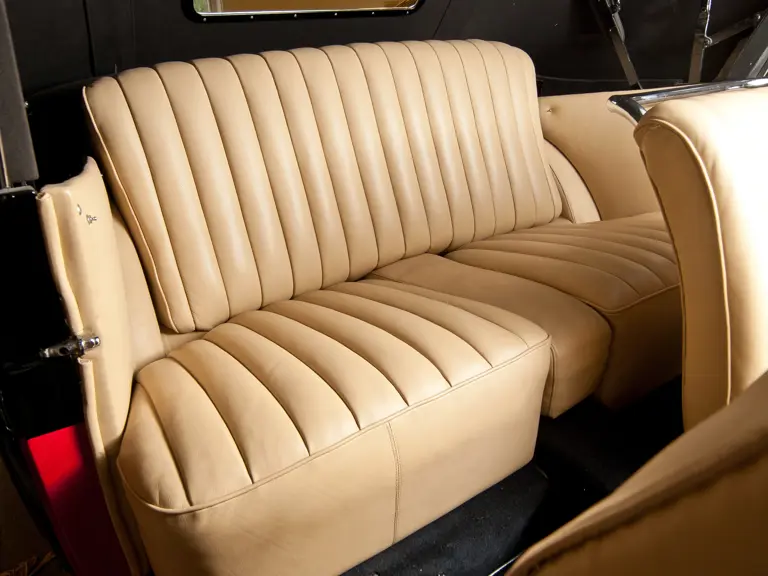
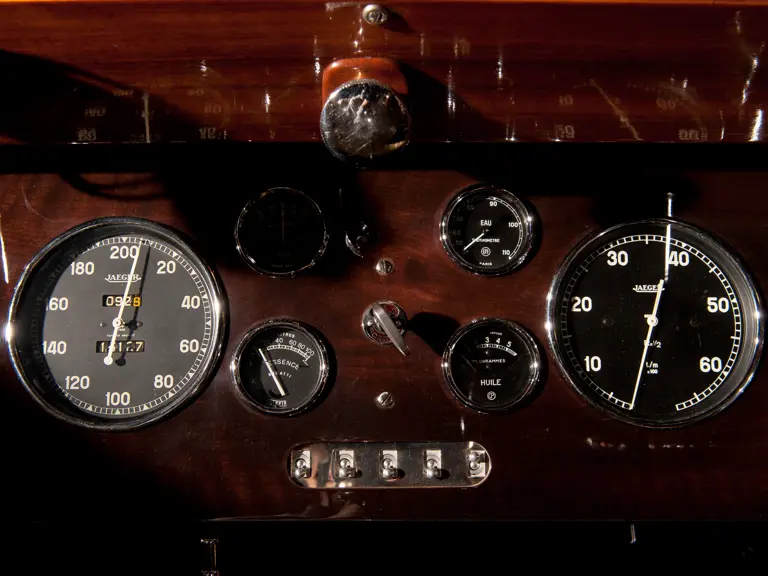


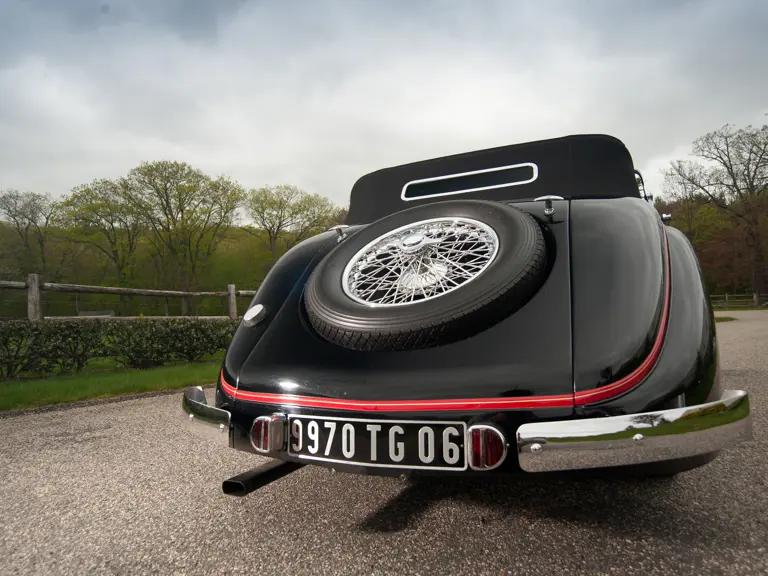
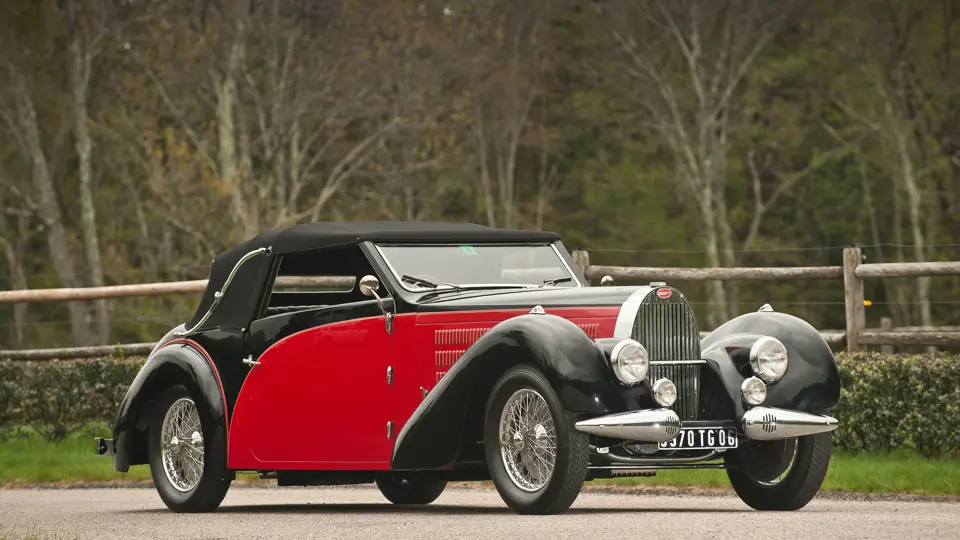
 | Monterey, California
| Monterey, California
